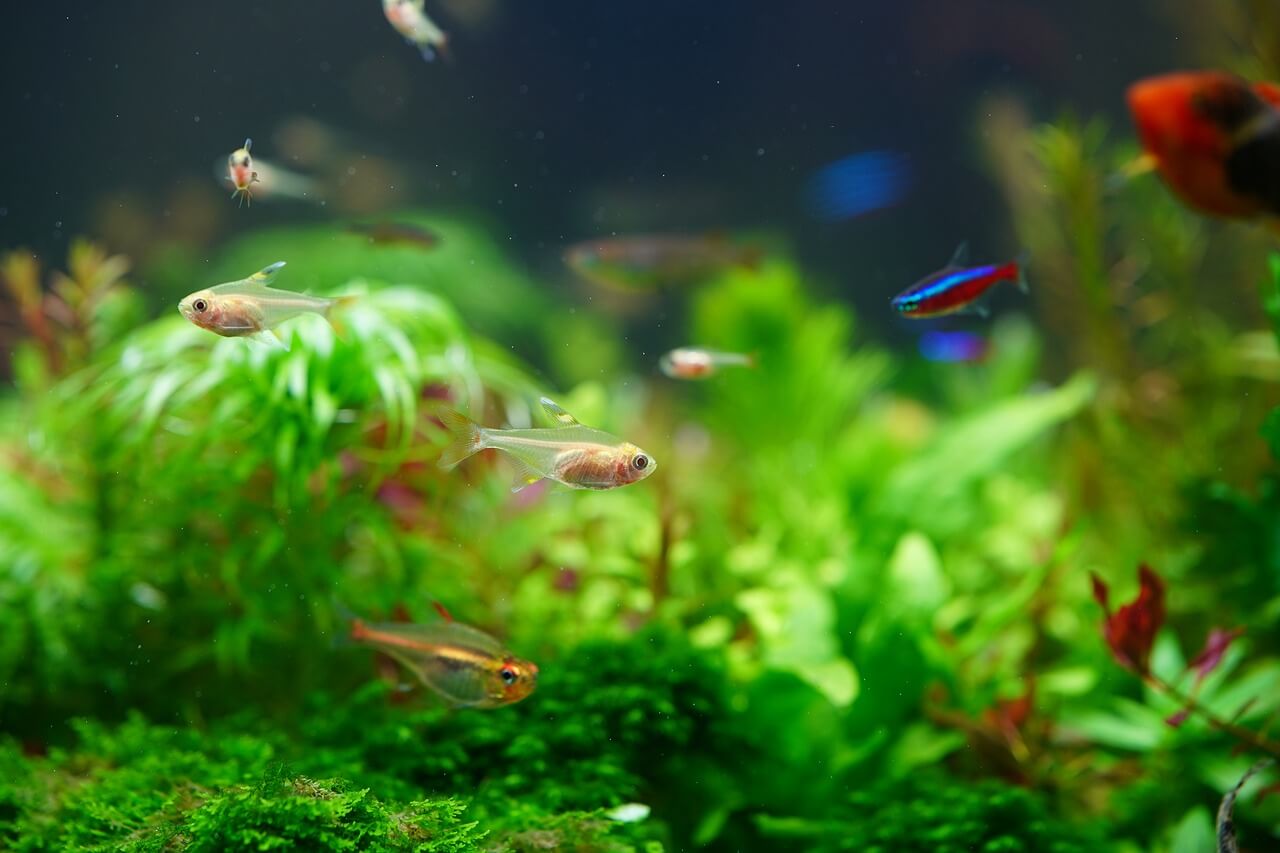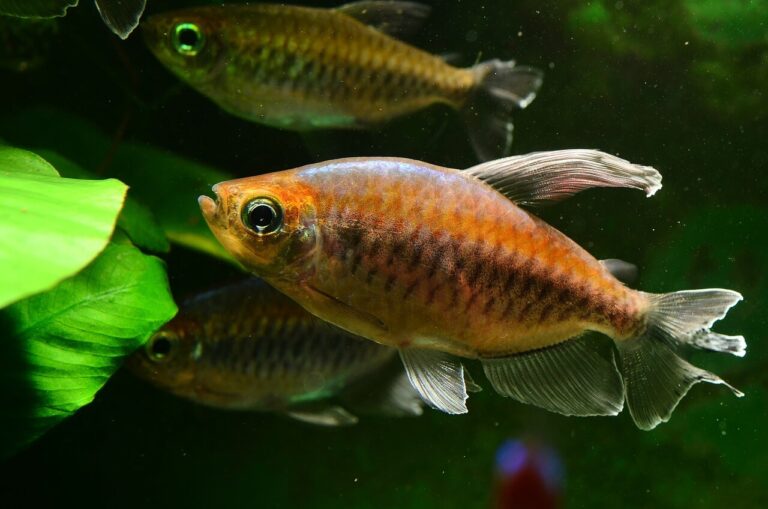Guppies are undoubtedly some of the most popular and vibrant fish in the aquarium hobby. Known for their dazzling colors, playful behavior, and relatively easy care requirements, guppies are an excellent choice for both beginners and experienced fish enthusiasts. In this comprehensive guppy care guide, we’ll walk you through everything you need to know to ensure your guppies thrive in your aquarium.
Source: https://aquariumfishsource.com/guppy-fish-care-guide/
1. Aquarium Setup
Before bringing home your guppies, it’s crucial to set up the right environment for them to flourish. Here are some key considerations:
Tank Size: A 10-gallon aquarium is an ideal starting point for a small group of guppies. A larger tank is even better if you have the space and resources.
Filtration: Proper filtration is essential to maintain water quality. Guppies prefer gentle water flow, so opt for a filter with adjustable flow or use a sponge filter to prevent excessive current.
Heater: Guppies are tropical fish, so you’ll need to keep the water temperature within the range of 75°F to 82°F (24°C to 28°C). A reliable heater is a must.
Substrate: Choose a substrate like gravel or sand for the tank bottom. Guppies will appreciate it for foraging and sifting.
2. Water Parameters
Maintaining the right water parameters is crucial for your guppies’ health and well-being. Here are the key factors to consider:
pH Level: Guppies thrive in slightly alkaline water, so aim for a pH range of 7.0 to 7.8.
Water Hardness: Guppies do well in water with moderate hardness levels, which typically fall between 5-20 dGH (degrees of General Hardness).
Ammonia and Nitrites: Keep ammonia and nitrite levels at zero. Regular water changes are essential to maintain these levels. These toxic compounds can be deadly to guppies, so a good filtration system and frequent water changes are essential to ensure a healthy environment.
3. Lighting
Guppies don’t require intense lighting, but providing a consistent light schedule is important for their well-being. Here’s what you should know:
Lighting Duration: Aim for 8-12 hours of light per day. This mimics a natural day-night cycle, which is beneficial for their overall health.
Intensity: While guppies aren’t overly sensitive to light, consider providing some shade or floating plants to give them options for seeking refuge from bright light if needed.
4. Tank Decor
Guppies appreciate a well-decorated tank with hiding spots, plants, and other elements. This not only makes the tank more visually appealing but also provides enrichment for the fish. Here’s what you can add:
Plants: Live or artificial plants offer cover and breeding sites for guppies. They also help improve water quality by absorbing nitrates. Guppies will often graze on live plants, so provide a variety.
Caves and Hiding Spots: Guppies feel more secure with hiding spots. You can include caves, driftwood, and other decor items that allow them to retreat when needed.
5. Diet
Feeding your guppies a balanced diet is vital for their health and vibrant colors. Here’s what to keep in mind:
Omnivorous Appetite: Guppies are omnivores, meaning they consume both animal and plant-based foods. To ensure a well-rounded diet, offer a variety of foods.
Food Types: High-quality flake or pellet foods formulated for tropical fish make a good staple diet. Supplement their diet with live or frozen foods like brine shrimp, daphnia, and bloodworms for added protein and variety.
Feeding Frequency: Feed your guppies 2-3 times a day, providing only what they can consume within a few minutes. Overfeeding can lead to water quality issues, so be mindful of portion sizes.
6. Social Behavior
Guppies are social fish and do best when kept in groups. Here’s what you need to know about their social behavior:
Group Size: It’s recommended to keep guppies in groups. A good ratio is 2-3 females for every male to prevent undue stress on the females and reduce aggression among males. Guppy Fish Care Guide: Everything you need to know on how to raise, breed and care for guppies
Territorial Behavior: Male guppies can be territorial and may display aggression toward each other, especially if there are too few females. Providing ample hiding spots can help reduce aggression.
7. Breeding
One of the unique aspects of guppies is their prolific breeding. If you’re interested in breeding guppies, here’s what you should consider:
Breeding Tank: To protect the fry (baby guppies) from adult guppies, set up a separate breeding tank. This tank should have plenty of hiding spots and floating plants.
Gestation Period: The gestation period for female guppies is typically 4-6 weeks. They will give birth to live fry, which are self-sufficient from birth.
Fry Care: Once the fry are born, you can provide them with powdered or liquid fry food, which is specifically designed to meet their nutritional needs. As they grow, you can introduce finely crushed flake food.
8. Water Quality
Maintaining good water quality is a top priority in guppy care. Here’s what you should do to ensure the health of your fish:
Regular Water Changes: Perform regular water changes of 10-25% every 1-2 weeks. This helps remove accumulated waste and keeps water parameters stable.
Water Testing: Invest in a good water testing kit to monitor parameters such as ammonia, nitrites, nitrates, and pH. Regular testing will help you catch and address issues early.
9. Common Health Issues
While guppies are generally hardy, they can be susceptible to certain health issues. To keep your fish healthy, consider the following:
Quarantine: Quarantine new fish before introducing them to your main tank. This helps prevent the spread of diseases.
Monitoring: Keep an eye on your guppies for signs of illness, such as fin rot, ich (white spots), and parasites. Early detection and treatment are key to successful recovery.
10. Compatibility
Guppies are peaceful community fish that can coexist with a variety of other species. Here are some tips on compatibility:
Tank Mates: Choose tank mates that have similar water parameter requirements and temperaments. Some good options include mollies, platies, and tetras.
Avoid Aggressive Species: Avoid aggressive or territorial species that might harm your guppies. Be cautious when introducing new tank mates and monitor their interactions.
In conclusion, keeping guppies is a rewarding experience. Their striking colors and playful personalities make them a fantastic addition to your home aquarium. By providing them with the right tank setup, balanced diet, and attention to water quality, you can enjoy these beautiful fish for years to come. Whether you’re a novice or an experienced hobbyist, guppies are a delightful and colorful choice for any aquarist.



